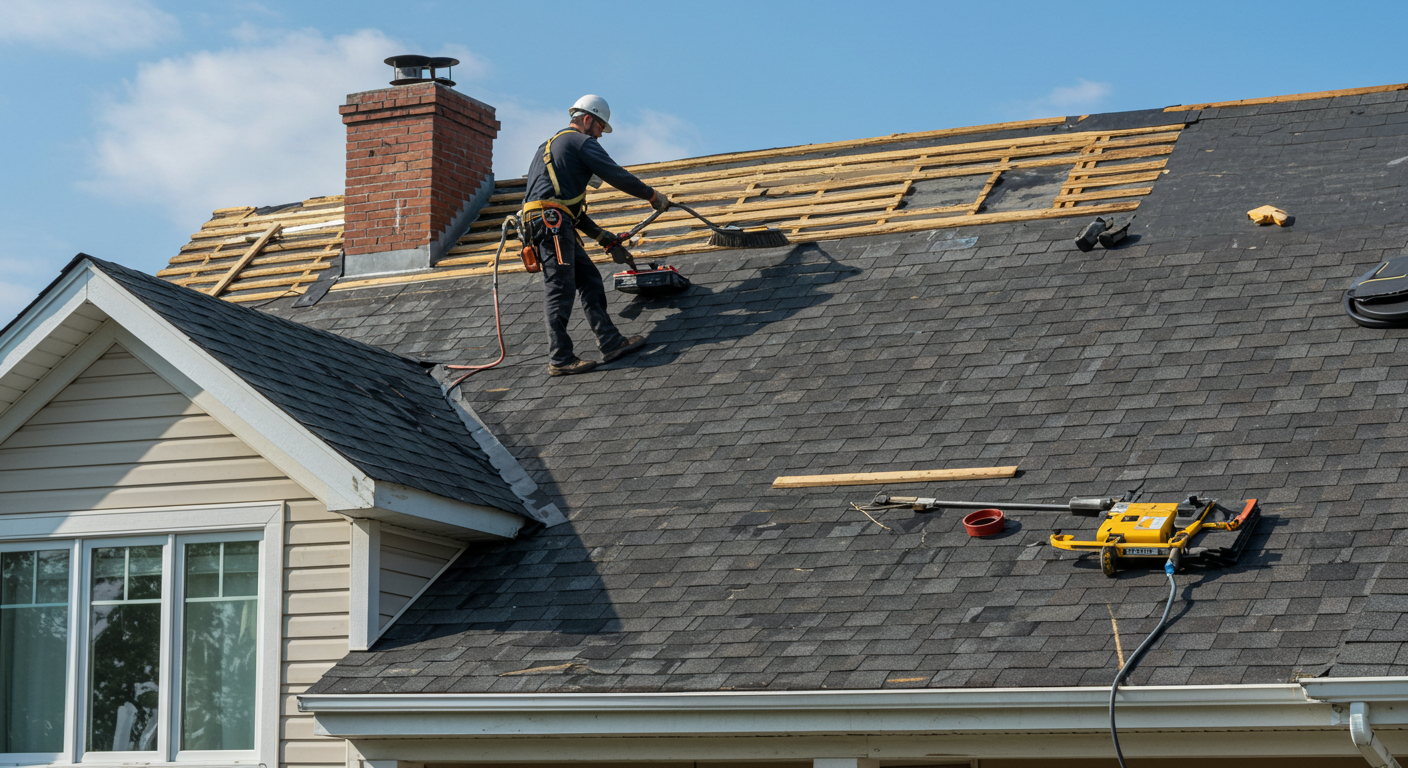Homeowners understand the significance of a well-maintained roof, yet many overlook the critical process of restoration. Unlike simple repairs or replacements, roof restoration is a comprehensive approach designed to rejuvenate a roof’s condition and extend its life. This guide delves into the steps and techniques involved in the roof restoration process, ensuring you have a sound understanding of what it entails.
Understanding Roof Restoration
Roof restoration is a multi-faceted process that involves inspecting, cleaning, repairing, and recoating a roof to restore its functionality and aesthetic appeal without the need for a complete replacement. Unlike basic repairs that temporarily fix specific issues, restoration encompasses a thorough treatment of the roof system. Think of it as a full makeover that not only addresses existing wear but also enhances the roof’s performance.
The Importance of Roof Restoration
Understanding why roof restoration matters is essential for homeowners. First and foremost, it is a cost-effective solution. While a complete roof replacement can be exorbitant, restoration significantly reduces expenses as it involves working with existing materials and addressing problem areas rather than starting from scratch.
- Restoration typically comes at a lower price point than replacement.
- It can add years to the lifespan of your roof, ensuring long-term durability.
- Early detection of issues allows for addressing potentially severe problems.
Secondly, through roof restoration, contractors tackle critical issues like leaks that can escalate into significant internal damage, thereby safeguarding the house’s structural integrity. In addition, a restoration project enhances insulation, optimizing energy efficiency and ultimately reducing utility bills.
The Step-by-Step Roof Restoration Process
The roof restoration process involves several carefully coordinated steps. Each plays a vital role in ensuring the desired outcome. Below is the typical workflow for a roof restoration project:
1. Inspection
A thorough inspection is the foundation of any successful roof restoration project. Experienced professionals assess the roof’s condition, checking for visible damage and underlying issues that may not be immediately apparent. This assessment includes examining:
- Shingle or tile integrity
- Signs of leaks or water damage
- Assessment of the roof foundation and structure
The inspector often provides a detailed report outlining necessary repairs and restoration methods, ensuring transparency in expectations and budgeting.
2. Cleaning
Once the inspection is complete, cleaning begins. This is a crucial step that involves high-pressure washing to effectively eliminate dirt, moss, algae, and other stubborn buildups that can compromise the roof materials. A clean surface is imperative for the subsequent steps as it ensures optimum adhesion of coatings. Typically, the cleaning process uses pressure exceeding 3000 PSI to guarantee thoroughness without damaging the roofing material.
3. Repairs
Following the success of the cleaning step, the next phase is repairs. Any damages identified during the inspection are addressed at this point. Common repair tasks include:
- Replacing missing or cracked shingles
- Fixing loose screws or panels on metal roofs
- Inspecting and repairing ridge capping
Thorough and timely repairs prevent minor issues from escalating into significant concerns that could lead to complete roof failure.
4. Priming
After repairs, a specialized primer is applied to the roof surface. Priming is critical as it enhances the adhesion of subsequent layers, ensuring that the protective coatings bond effectively. Different primers may be used depending on the roofing materials, targeting specific issues like rust or erosion.
5. Coating
The final step in the restoration process involves applying high-quality roof coatings. This step is vital as it not only enhances the roof’s appearance but also reinforces its protective capabilities against various weather conditions. Some modern coatings contain reflective properties that help reduce energy costs by minimizing heat absorption. Popular products like RoofSeal and AquaGuard can be excellent choices in this phase.
Common Techniques Used in Roof Restoration
There are several techniques tailored to meet specific roofing needs, depending on the type of material and the extent of restoration required.
- Elastomeric Coatings: Known for their flexibility and durability, these coatings can expand and contract, reducing the risk of cracks and leaks.
- Reflective Coatings: These products help conserve energy by reflecting sunlight, making them popular in warmer climates.
- Seam Sealing: For roofs with seams or joints, applying sealants ensures that water does not infiltrate.
Understanding the intricacies of the roof restoration process is key for maintaining your home’s integrity. For expert guidance, consider companies that offer comprehensive solutions in roof restoration, utilizing quality products from trusted brands.
